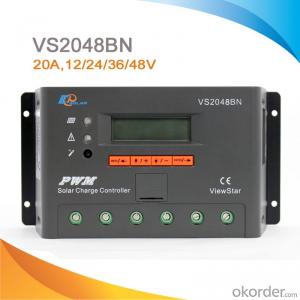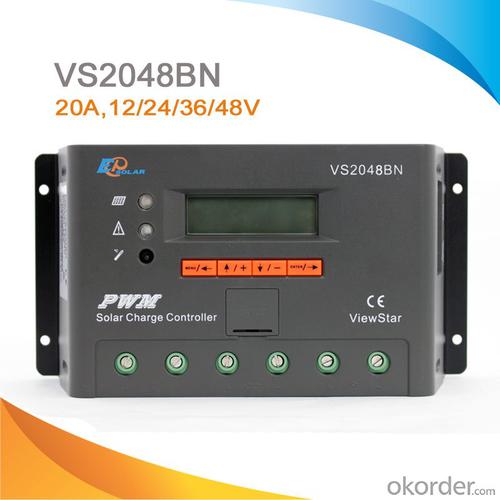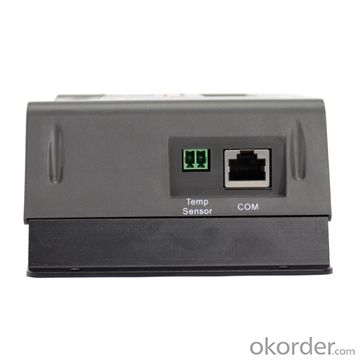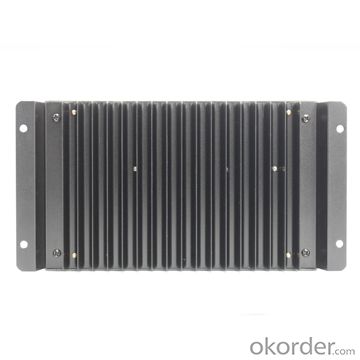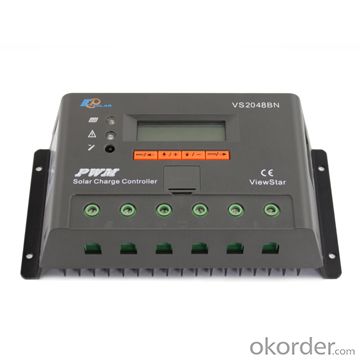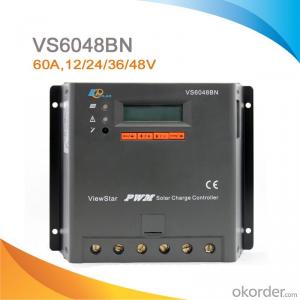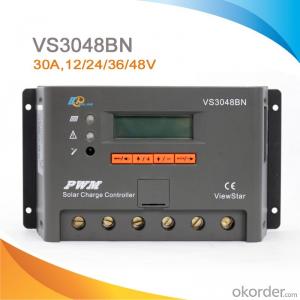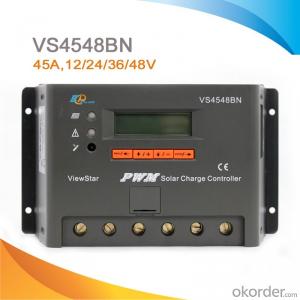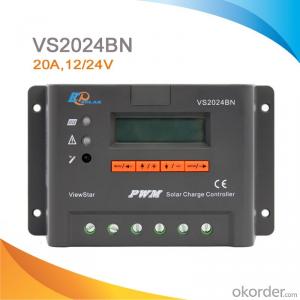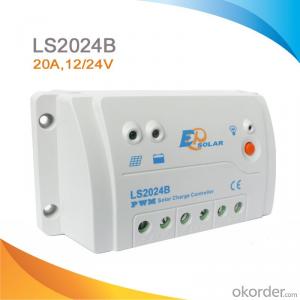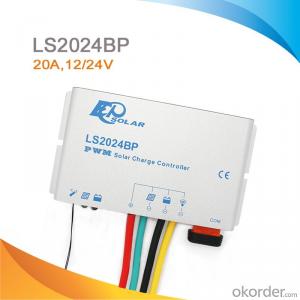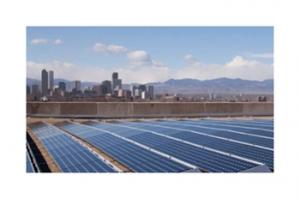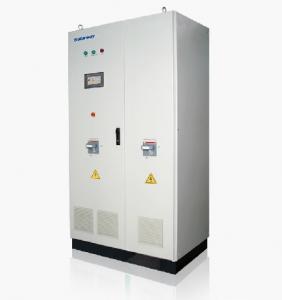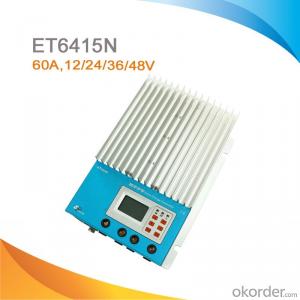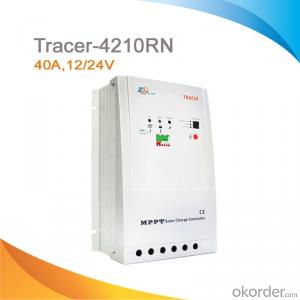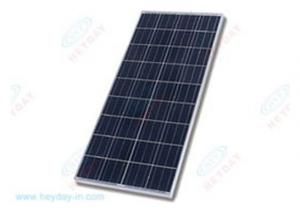Solar Controllers Ocala PWM Solar Charge Controller with LCD Display 20A, 12/24/36/48V, VS2048BN
OKorder Service Pledge
OKorder Financial Service
You Might Also Like
Solar Controller Descriptions
ViewStar series solar controller is our new generation controller for off-grid solar system. It can be widely used with various applications, such as street light, solar home system or small power station etc.
Features
·Excellent EMC design
·32 bit MCU with high speed
·High efficient Series PWM charging
·Four battery type options: Sealed, Gel, Flooded, and USER
·Intelligent lighting and timer control for solar lighting system
·12 bit A/D high-precision sampling to ensure accuracy
·Use MOSFET as electronic switch
·Full control parameters setting and modification, diversified load control mode
·Humanized design of browser interface, undertake every operating conveniently
·Temperature compensation
·Adopt graphics dot-matrix LCD screen and HMI (human-machine interface) with 4 buttons,integrated menu displaying and operation
·Energy statistics function
·RS485 ports with MODBUS communication protocol
·Optional PC monitoring software and remote meter for real-time monitoring and battery management parameter setting
·Field upgradable firmware
Electronic Protections:
·PV short circuit protection
·PV reverse polarity protection
·Battery overcharge protection
·Battery over discharge protection
·Battery reverse polarity protection
·Load overload protection
·Load short circuit protection
·Overheating protection
Specification:
Model | VS2048BN | VS3048BN | VS4548BN | VS6048BN |
Nominal system voltage | 12/24/36/48V auto work | |||
Rated battery current | 20A | 30A | 45A | 60A |
Rated load current | 20A | 30A | 45A | 60A |
Max. battery voltage | 64V | |||
Equalize charging voltage | Sealed: 14.6V, Flooded: 14.8V, User-defined: 9~17V | |||
Boost charging voltage | Gel: 14.2V, Sealed: 14.6V, Flooded: 14.8V, User-defined: 9~17V | |||
Float charging voltage | Gel /Sealed /Flooded: 13.8V, User-defined: 9~17V | |||
Low voltage reconnect voltage | Gel /Sealed /Flooded: 12.6V, User-defined: 9~17V | |||
Low voltage disconnect voltage | Gel /Sealed /Flooded: 11.1V, User-defined: 9~17V | |||
Self-consumption | ≤15mA(12V); ≤10mA(24V); ≤9mA(36V); ≤8mA(48V) | |||
Grounding | Common negative | |||
Temp. compensation | -3mV/°C/2V | |||
Relative humidity | 10%~90% Non-condensation | |||
Communication | RS485 / RJ45 interface | |||
LCD temperature | -20°C ~ +70°C | |||
Working temperature | -25°C ~ +55°C | |||
Humidity | ≤95% N.C. | |||
Enclosure | IP30 | |||
Overall dimension | 200x103x58mm | 201x109x59mm | 205x119x67mm | 205x174x64mm |
Terminals | 16mm2 | 35mm2 | 35mm2 | 35mm2 |
Net weight | 0.7kg | 0.9kg | 1.2kg | 1.5kg |
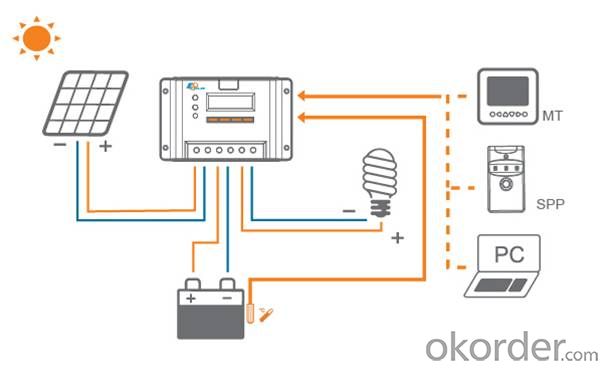
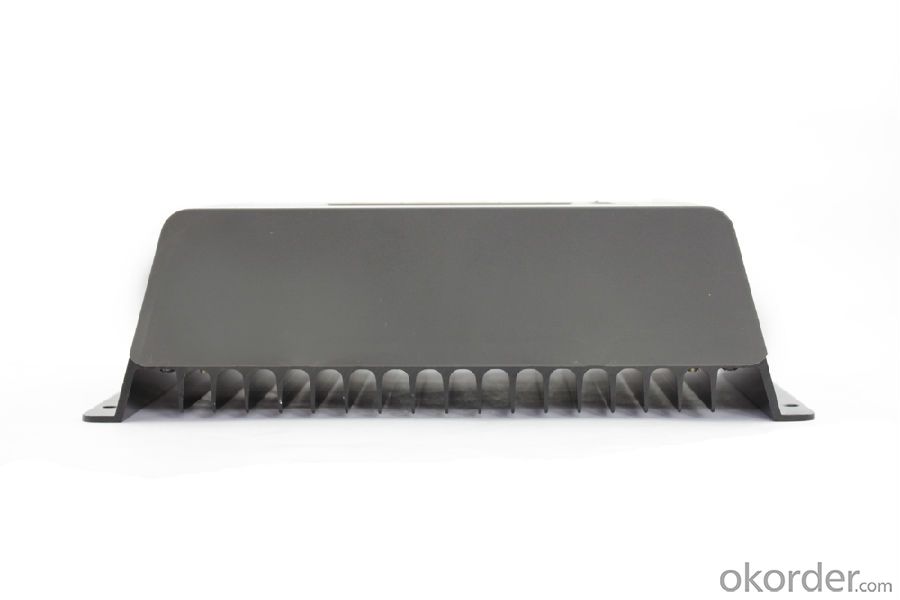
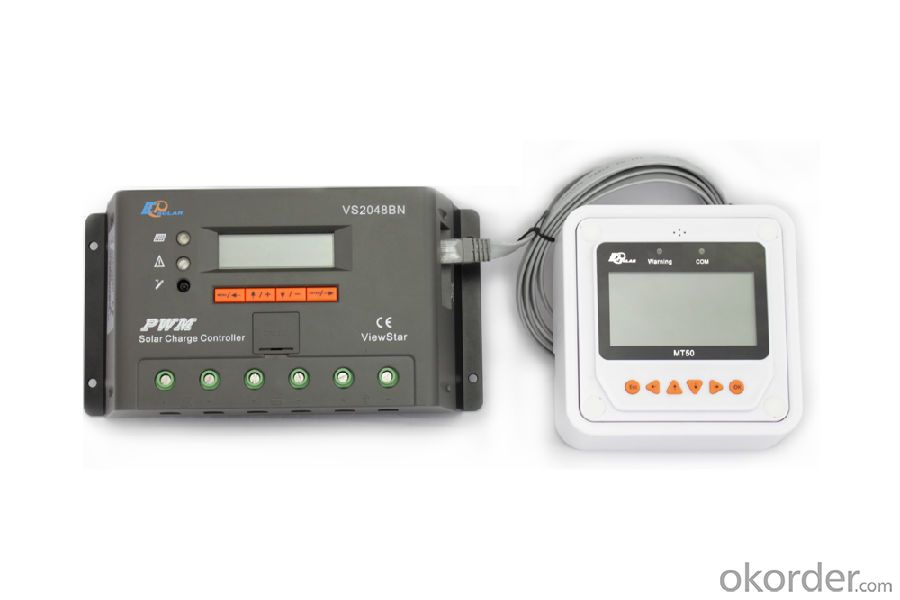
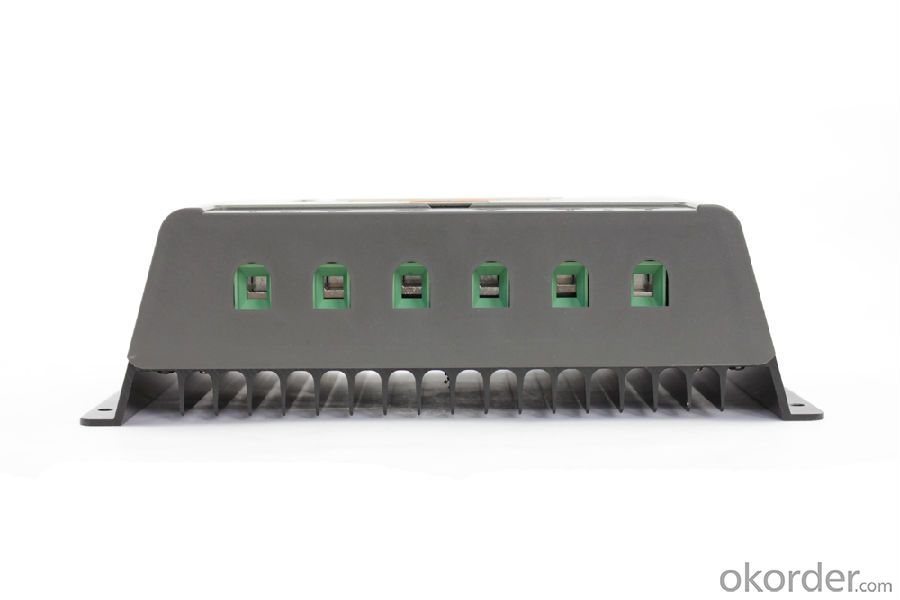
- Q: Can a solar controller be used with solar-powered outdoor signage?
- Yes, a solar controller can be used with solar-powered outdoor signage. A solar controller is necessary to regulate and optimize the charging of the batteries used in solar-powered systems. It helps to prevent overcharging, over-discharging, and other potential issues. Therefore, using a solar controller is essential for maintaining the efficiency and longevity of the batteries powering the outdoor signage.
- Q: What is the maximum input voltage that a solar controller can handle?
- The maximum input voltage that a solar controller can handle differs depending on the specific model and manufacturer. Nonetheless, the majority of solar controllers are capable of accommodating input voltages of up to 150 volts DC. To ensure that the input voltage of your solar panel system falls within the controller's maximum limit, it is crucial to review the specifications provided by the manufacturer of the solar controller. Going beyond the maximum input voltage has the potential to harm the controller and could result in system failure.
- Q: Can a solar controller be used with a solar-powered electric gate?
- Indeed, a solar-powered electric gate can utilize a solar controller. Specifically engineered to regulate and enhance the charging process of a solar panel system, a solar controller becomes indispensable in managing the battery charging of a solar-powered electric gate. Its principal function is to ensure the batteries are charged optimally, averting the risk of overcharging that may result in damage. Consequently, by employing a solar controller, the solar-powered electric gate can efficiently harness solar energy and operate with unwavering reliability.
- Q: How do you protect a solar controller from dust and debris?
- One way to protect a solar controller from dust and debris is by installing it inside an enclosure or a sealed box. This will prevent any particles from entering and potentially damaging the controller. Additionally, regular cleaning and maintenance of the surrounding area can help minimize the accumulation of dust and debris.
- Q: What is the maximum discharge voltage of a solar controller?
- The maximum discharge voltage of a solar controller typically depends on the specific model and manufacturer. It can range from around 12 volts to 48 volts or higher, depending on the system's design and intended usage.
- Q: Can a solar controller be used in a solar-powered water pumping system?
- Yes, a solar controller can be used in a solar-powered water pumping system. A solar controller helps regulate and optimize the charging of batteries in a solar system, ensuring efficient use of solar energy and preventing overcharging or damage to the batteries. In a solar-powered water pumping system, a solar controller can help manage the power input from the solar panels and control the charging of batteries used to store solar energy, ultimately maximizing the efficiency and performance of the water pumping system.
- Q: Can a solar controller be used with solar-powered indoor electric vehicle charging stations?
- Solar-powered indoor electric vehicle charging stations can utilize a solar controller, also known as a charge controller. This device is responsible for regulating the flow of electricity from solar panels to the battery bank, ensuring proper charging and preventing overcharging or discharging. For indoor electric vehicle charging stations powered by solar energy, the solar controller plays a vital role in managing the electricity generated by the solar panels. It ensures that the charging station receives the appropriate amount of power and stores any excess energy in the battery bank for future use or feeds it back into the grid. By incorporating a solar controller, the solar-powered indoor electric vehicle charging station can effectively harness and utilize solar energy, resulting in a more efficient and sustainable charging process. This controller optimizes the performance of the charging station, providing reliable and clean energy for electric vehicle charging, even in indoor environments.
- Q: Can a solar controller be used with solar panels of different orientations?
- Yes, a solar controller can be used with solar panels of different orientations. The solar controller's main function is to regulate the charging of batteries by converting the solar panel's output to a suitable voltage and current. It does not depend on the orientation of the solar panels, as long as they are connected properly and generating sufficient power.
- Q: How does a solar controller prevent damage to the solar panels during extreme temperature conditions?
- A solar controller prevents damage to solar panels during extreme temperature conditions by regulating and maintaining the voltage and temperature levels within safe operating ranges. During hot temperatures, the solar controller prevents overheating of the panels by reducing the charging voltage or current to prevent excessive heat buildup. This is crucial as excessive heat can lead to thermal stress, delamination, or even cracking of the solar cells. On the other hand, during extremely cold temperatures, the solar controller helps prevent damage by ensuring that the batteries connected to the solar panels are not overcharged or discharged. This is achieved by adjusting the charging algorithm or disconnecting the batteries when the temperature drops below a certain threshold. Additionally, some advanced solar controllers incorporate temperature sensors that monitor the temperature of the solar panels. These sensors provide real-time data to the controller, allowing it to adjust the charging parameters accordingly and prevent any potential damage due to extreme temperature conditions. Overall, a solar controller plays a critical role in protecting solar panels from damage caused by extreme temperatures. By regulating the voltage, current, and battery charging levels, it ensures that the panels operate within safe limits and maximizes their lifespan and performance.
- Q: How does a solar controller handle battery under-voltage protection?
- A solar controller handles battery under-voltage protection by monitoring the voltage of the battery connected to the solar system. If the battery voltage drops below a preset threshold, the solar controller will automatically disconnect the battery from the charging source, preventing further discharge and potential damage to the battery. This feature ensures the longevity and health of the battery while optimizing its performance.
Send your message to us
Solar Controllers Ocala PWM Solar Charge Controller with LCD Display 20A, 12/24/36/48V, VS2048BN
OKorder Service Pledge
OKorder Financial Service
Similar products
Hot products
Hot Searches
Related keywords
